
Sikhism: An Introduction
Nov 30, 2011
230 likes | 1.15k Views
Sikhism: An Introduction. Sikhism comes from the word “Sikh”- Disciple Is a distinct and unique religion, not a sect of Hinduism or Islam Guru is made from two words: Gu (dispeller of ignorance) and ru (bringer of enlightenment) Gurdwara - House of worship (Sikh Temple)

Share Presentation
- sikhs mool mantar
- free community kitchen
- noble actions
- guru granth sahib ji

Presentation Transcript
Sikhism comes from the word “Sikh”- Disciple Is a distinct and unique religion, not a sect of Hinduism or Islam Guru is made from two words: Gu(dispeller of ignorance) and ru (bringer of enlightenment) Gurdwara - House of worship (Sikh Temple) Waheguru – One of the Name of God/Almighty Khalsa - belonging to the divine, ‘Pure’ Guru Granth Sahib ji - The Spiritual Scripture of Sikhs Mool Mantar – Basic Tenet(s) There is but one God True is his name The Creator, without fear, without enmity Timeless, Without birth i.e. unborn and Self illumined Sikhism
Guru Nanak Dev Ji Guru Angad Dev Ji Guru Amar Das Ji Guru Ram Das Ji Guru Arjan Dev Ji Guru Hargobind Ji Guru Har Rai Ji Guru Harkrishan Ji Guru Tegh Bhadur Ji Guru Gobind Singh Ji Ten Gurus (Religious Teachers) - One Eternal Light
THE FIRST MASTERGuru Nanak Dev ji (1469 - 1539) Founder of the Sikhism based on Equality & justice for all
THE TENTH MASTERGuru Gobind Singh ji • Father Martyred to protect the Right of Freedom of Religion • Created the Sikh Nation: Khalsa – legion of the pure with Saint/Soldier qualities to protect anyone from oppression and injustice • Amrit- Baptism Ceremony in 1699 • Prescribed the 5 Articles of Faith • Declared Guru Granth Sahib as the eternal Guru and ultimate spiritual authority for the Sikhs.
Guru Granth Sahib Ji • Compiled by the Sikh Guru’s themselves • Guru Granth Sahib ji revered as living Master • Any member, male or female, of the congregation can read from Guru Granth Sahib Ji. • All religious activity of the Sikhs are focused upon and revolves around the Spiritual Scripture, the Guru Granth Sahib. • Contains teachings of the Gurus and also other Muslim and Hindu saints
Origin of universe is from ONE eternal light source One god/creator - ALL humans created equal Men and Women have same rights Human life - a precious blessing All carry a spark of divine light: consequently no race, pigmentation, gender, is intrinsically superior to others We are to behave as Role Models for those around us Freedom and Liberty for all - Protect yours and others rights Truth, fearless, non-hateful spirit are important in attaining salvation Justice and liberty for all Only Those who practice LOVE obtain God Respect for all Religions Equality of all faiths, caste, creed, race, and all are welcome to the Gurudwara Sikh Beliefs
Sarbat da bhalla :Welfare unto all Seva: Daily selfless service to humanity Service to god through selfless service to humanity and Gods creation. Vand Chakna: sharing with the needy Kirat Karniyee: Honest Labor Honest earnings by hard work Do not become burden on the society Daily Prayers & Meditation Bhai Kanhayia - pioneer of the Red Cross & humanitarian aide organizations Values & Practices
Behold All Human Race as One The Hymns of Muslim, Hindu and so-called ‘lower caste’ saints were incorporated into Guru Granth Sahib ji alongside Sikh Gurus Hymns without any kind of distinction. A Sikh (Bhai Kanhaiya Ji) serving water to friend and foes alike in the battlefield. LANGAR – Free Community Kitchen The tradition of Langar (wherein everyone sit together and share a meal after services regardless of social class or whether they are rich or poor) expresses the ideals of equality, sharing and the Oneness of all humankind
No magic: antidote for evil is to remember God (recite His name) No rituals. No superstitions. No statues or idol worship Sikh men and women keep uncut hair Dress code given by tenth Guru: Guru Gobind Singh, as a form of identity and uniqueness. Sikhs wear the five K’s: Kesh (unshorn hair) Kanga (small comb) Kara (iron bangle) Kirpaan (symbolic sword) Kachera (underpants) Color of turban is personal preference Practices & Dress Code
Kesh: uncut hair: Sikhs do not cut hair or beards to demonstrate their Love and obedience to their faith. Kachera: undershot to represent modesty & fidelity Kanga: wooden comb to keep uncut hair neat and clean Kara : bracelet, made of steel worn on dominant hand : a reminder of noble actions, a symbol of eternity Kirpaan: ceremonial knife symbolizing freedom, liberty and justice Never to be used as an offensive weapon The Five K’s(Unique Identity - Discipline & Spirituality) DON’Ts • Shaving or cutting of Hair • Eating Halal ( Kutta ) meat • Adultery • Use of tobacco or intoxicants (Smoking, Drugs, Alcohol etc)
Turban - The Heritage & Pride of Sikhs90% of people wearing turbans in Netherlands are Sikhs • Covers long, uncut hair • Approx. 15 feet of cloth wrapped neatly around the head every time it is put on • Symbolizes discipline, integrity, humility, and spirituality • Religious requirement - must be worn at all times in public
Sikhism and Women Rights • Spiritual scripture ( Guru Granth Sahib ) mandate women must be respected and treated as equal to man • Sikh Gurus rejected the old myth of females being inferior to men. • Sikh followers are instructed not to associate with those who discriminate against Women • Sikh Women can do everything • Both men and women are considered capable of reaching the highest levels of spirituality
Guru’s Lead by Example Honest labor and work ("Kirat karni") are the approved way of life in Sikhism. Equal Right to Women Guru Amardas ji conferred equal status on Men & Women Bhai Lehna ji working with Guru Nanak Dev ji in the fields Guru Arjan Dev ji (5th Guru) serving the lepers Community Service - Helping the poor and needy
Sikhs In The Netherlands • Sikhs came to Netherlands over 50-60 years ago • Majority of Sikhs came from India and more recently from Afghanistan. • Around 6-8 thousand Sikhs today in Netherlands • There are total of three Gurdwaras. They are located in Amsterdam, The Hauge and Rotterdam • Around 90% people wearing turbans in Netherlands are Sikhs.
Visit a Gurdwara • Harmander Sahib (also known as Golden Temple): It has four entrances: symbolizing people of any faith, any race are welcomed and encouraged to attend the services. • This concept underscores the peaceful co-existence with all other religions and people. Daily prayer ends with asking God for the good of all humanity • Worshipers of both sexes remove their shoes and cover their heads before entering the Gurdwara, to show respect to teachings of Guru.
Selected Verses • The one who earns an honest living, gives to the underprivileged, (Nanak says), he realizes the true path • You do good for us, but we do not see it as good, you are kind and compassionate for ever and ever • The Supreme Religion of all relegion is to remember Gods name and perform serene and pious deeds. • There are millions upon millions of suns, planets and orbs in the sky, with millions upon millions of skies” • The universe has been created and destroyed many times before, at His will • There is no enemy and no alien, we are friends to everyone.
Resources • www.Sikhs.nl( Dutch ) • www.Sikh-religion.de( German ) • www.Sikhs.org(English) • www.Sikh.dk(Danish) • www.Sikhnet.com( English )
- More by User

OO programming and UML Design
OO programming and UML Design Dr. Zhen Jiang West Chester University E-mail: [email protected] Outline Introduction to object and class Introduction to UML Introduction to UML design Introduction to object and class What’s object Identity State Behavior Sequence Diagram
1.2k views • 70 slides
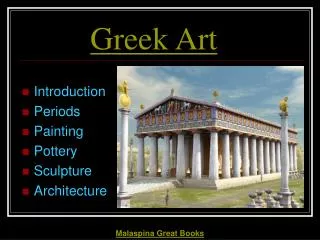
Greek Art Introduction Periods Painting Pottery Sculpture Architecture Malaspina Great Books Introduction I Mycenae Lion Gate c. 1350-1200 BC Introduction The "Agamemnon" Mask from Tomb V at Mycenae 16c. BC Introduction Pheidas’ Athena Parthenos 5 th c. BC
1.75k views • 100 slides
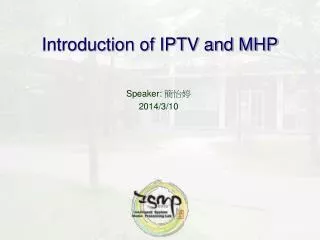
Introduction of IPTV and MHP
Introduction of IPTV and MHP. Speaker: 簡怡婷 2014/3/10. Outline. Introduction of IPTV What is IPTV – Definition IPTV Value Chain Technique Introduction of MHP Introduction of MHP Basic Architecture MHP Internal Interfaces Xlet - MHP Application MHP Application
2.1k views • 35 slides

Introduction to Precipitation
Introduction to Precipitation . CEE 4420 – Engineering Hydrology (Prepared by Abebe Gebregiorgis). 2.1 Introduction . All forms of water that reach the earth from the atmosphere is called Precipitation .
1.74k views • 31 slides

Introduction to Investment
Introduction to Investment. Bruce Viney Director of Training and Client Services. Why we are here…. Exam (syllabus valid from 1 October 2006) 60 minutes 50 Questions Multiple choice Pass mark is 70%. Programme/Syllabus. * plus/minus 2. Introduction. CHAPTER 1.
1.9k views • 111 slides
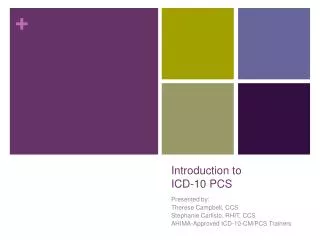
Introduction to ICD-10 PCS
Introduction to ICD-10 PCS . Presented by: Therese Campbell, CCS Stephanie Carlisto, RHIT, CCS AHIMA-Approved ICD-10-CM/PCS Trainers. ICD-10-PCS History, Structure and Organization History of ICD-10-PCS and General Structure. Introduction
4.52k views • 194 slides

Course Introduction
Course Introduction. Welcome! Introductions Icebreaker Housekeeping Agenda. Course Introduction. Housekeeping Ground Rules Be on time Listen to and show respect for the opinions of others No disruptive side-conversations Cell Phone and PDAs off Facilities Breaks Lunch Parking Lot.
1.24k views • 102 slides
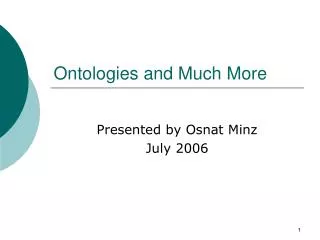
Ontologies and Much More
Ontologies and Much More. Presented by Osnat Minz July 2006. Agenda. Introduction to semantic web Ontology RDF , RDFs ,OWL Introduction to semantic web services Very Brief MDA Introduction Potential Uses of the Semantic Web in Systems and Software Engineering.
1.15k views • 95 slides

Introduction to optimization
Introduction to optimization. Dr. Md. Golam Hossain Professor Department of Statistics University of Rajshahi Rajshahi-6205, Bangladesh E-mail:[email protected] HP: +8801914254013. Module Outline. Mathematical Concepts for Optimization Introduction to Linear Programming
1.57k views • 73 slides


LIS650 part 0 Introduction to the course and to the World Wide Web
LIS650 part 0 Introduction to the course and to the World Wide Web. Thomas Krichel 2011-04-21. in this part. a dministrative introduction to the course s ubstantive introduction to the course t alk about you! i ntroduction to the web introduction to hypertext http and ssh
4.08k views • 391 slides
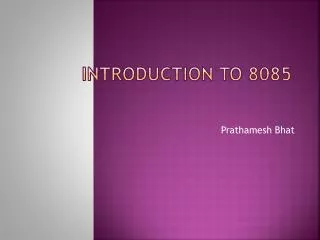
Introduction to 8085
Introduction to 8085. Prathamesh Bhat. 8085 INTRODUCTION. The features of INTEL 8085 are : It is an 8 bit processor. It is a single chip N-MOS device with 40 pins. It has multiplexed address and data bus.(AD 0 -AD 7 ). It works on 5 Volt dc power supply.
1.26k views • 94 slides

Chapter 4 Introduction to Nanochemistry
Chapter 4 Introduction to Nanochemistry. Chapter 4. Introduction to Nanochemistry. Periodicity of the Elements Chemical Bonding Intermolecular Forces Nanoscale Structures Practical Applications . Introduction to N anochemistry. 1. 4. Section 1: Periodicity of the Elements.
5.14k views • 52 slides

Introduction
Summary of Findings & Assessment of Quality of Evidence: Grade Workshop Sunday, October 17, 2010 0900 to 1700. Introduction. Introduction to facilitators. Michelle Kho Jan Brozek Nancy Santesso Holger Schunemann Ingvil von Mehren Sæterdal. Agenda.
1.2k views • 102 slides

An Introduction to Linux
An Introduction to Linux. &. Last updated: September 6, 2014 at 08:00. Credits. Cleveland Linux Users’ Group Introduction to Linux (Jeff Gilton & Jim Weirich) IBM An Introduction to Linux (Al Henderson) Why Linux is storming the market (Jonathan Prial) Ivan Bowman
1.64k views • 120 slides
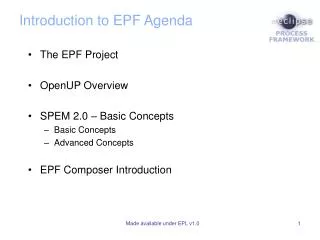
Introduction to EPF Agenda
Introduction to EPF Agenda. The EPF Project OpenUP Overview SPEM 2.0 – Basic Concepts Basic Concepts Advanced Concepts EPF Composer Introduction. Introduction to the Eclipse Process Framework. The EPF Project. The EPF is a Sub-Project Under the “Technology” Project. Test & Performance
1.3k views • 102 slides

RooFit. Introduction Basic functionality Addition and convolution Building multidimensional models Managing data, discrete variables and simultaneous fits More on likelihood calculation and minimization Validation studies. 1. Introduction & Overview. Introduction
2.4k views • 200 slides
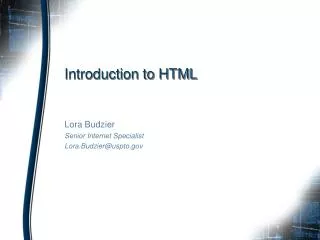
Introduction to HTML
Introduction to HTML. Lora Budzier Senior Internet Specialist [email protected]. Agenda. Introduction Tools Coding Basics Structuring Text Adding Functionality Formatting Text. Introduction. HyperText Markup Language (HTML)
2.04k views • 115 slides

LINUX. System Administration Agenda. Day 1: Introduction to LINUX Day 2: Introduction to Progress Day 3: Platform Specific - half day. Introduction to UNIX. Linux Install Storage fundamentals Working with Files and Directories Editing and Scripting Utilities and Maintenance
2k views • 111 slides

Introduction. Introduction. O. Farming was used during old centuries. Development of O. F. started at the begin of 20th century where biodynamic concept appeared in 1942 Traditional conventional agriculture was the main system for food production after the 2nd world war.
4.36k views • 370 slides

35. Polymers. 35.1 Introduction 35.2 Naturally Occurring Polymers 35.3 Synthetic Polymers 35.4 Effect of Structure on Properties of Polymers. 35.1. Introduction. 35.1 Introduction (SB p.150). Introduction.
3.21k views • 250 slides

Introduction to SIX - SIGMA
Introduction to SIX - SIGMA. Presented by : http://www.QualityGurus.com. Agenda. Participants Introduction. Your Name Department Your job profile Your exposure to Quality Management/ Six Sigma. Ground Rules. Program success depends on your participation. Actively participate.
1.75k views • 97 slides
- Preferences

Sikhism - PowerPoint PPT Presentation
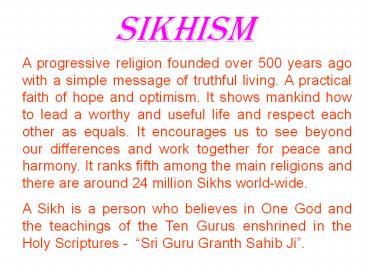
Sikhism A progressive religion founded over 500 years ago with a simple message of truthful living. A practical faith of hope and optimism. It shows mankind how to ... – PowerPoint PPT presentation
- DIVINE LIGHT
- Guru Arjan Dev oversaw the building of Harmandir Sahib (Golden Temple).
- He also compiled The Adi Granth which included the teachings of first five Gurus that of many Hindu Muslim Saints. It graced the Harmandir Sahib for the very first time in 1604.
- He sacrificed his life for upholding human rights freedom of worship.
- He also built THE AKAL TAKHAT
- Guru Har Rai gave lectures on the writings of the Gurus. He ate simple food which was earned by the labour of his own hands.
- Followers from far would come to Kiratpur to seek the blessings of Guru Har Rai. The Guru spread the message of Sikhism through sending out disciples to eastern India, to Rajasthan and to Delhi.
- Guru Harkrishan was the
- son of Guru Har Rai. He
- succeeded his father as
- Guru at the age of five
- Guru Harkrishan healed
- many people of smallpox
- but died of the disease
- when he was only eight
- years old (1656 - 1664)
PowerShow.com is a leading presentation sharing website. It has millions of presentations already uploaded and available with 1,000s more being uploaded by its users every day. Whatever your area of interest, here you’ll be able to find and view presentations you’ll love and possibly download. And, best of all, it is completely free and easy to use.
You might even have a presentation you’d like to share with others. If so, just upload it to PowerShow.com. We’ll convert it to an HTML5 slideshow that includes all the media types you’ve already added: audio, video, music, pictures, animations and transition effects. Then you can share it with your target audience as well as PowerShow.com’s millions of monthly visitors. And, again, it’s all free.
About the Developers
PowerShow.com is brought to you by CrystalGraphics , the award-winning developer and market-leading publisher of rich-media enhancement products for presentations. Our product offerings include millions of PowerPoint templates, diagrams, animated 3D characters and more.


IMAGES
VIDEO
COMMENTS
Sikhism is a distinct religion that was founded by Guru Nanak in 15th century India. It believes in one God and teaches the equality of all people and religions. Sikhs follow the teachings of 10 Gurus and consider the Guru Granth Sahib as their spiritual guide.
sikh history. Sikhism is a religion founded over 500 years ago that preaches messages of devotion, truthfulness, equality, and simplicity. It has over 20 million followers worldwide and its teachings are contained in the Sikh Holy Book called the Sri Guru Granth Sahib.
Sikhism originated in the 15th century in the Punjab region of South Asia by Guru Nanak and his successors. It combines elements of Hinduism and Islam while also having some unique philosophical and theological concepts including belief in one God, the rejection of idolatry and caste system, equality of mankind, and emphasis on living a ...
Download our Sikh History Presentation Theme for PowerPoint and Google Slides to showcase the rich and diverse heritage of the Sikh community in a visually engaging manner.
SIKHISM HISTORY. Description: Sikhism does not have priests, which were abolished by Guru Gobind Singh. The Guru felt that they had become corrupt and full of ego. Sikhs only have custodians of the Guru Granth Sahib (granthi), and any Sikh is free to read the Guru Granth Sahib in the Gurdwara (a Sikh temple) or in their home.
The word ‘Sikh’ in the Punjabi language means ‘disciple’, Sikhs are the disciples of God who follow the writings and teachings of the Ten Sikh Gurus. The wisdom of these teachings in Sri Guru Granth Sahib are practical and universal in their appeal to all mankind. Slideshow 7199928 by...
Sikhism. History…. • Sikhism originated in Punjab, a state in India. • Began in 1500 CE, when Guru Nanak Dev Ji, created a distinct religion. • Nine gurus followed Nanak Dev Ji to create the religion.
THE TENTH MASTERGuru Gobind Singh ji • Father Martyred to protect the Right of Freedom of Religion • Created the Sikh Nation: Khalsa – legion of the pure with Saint/Soldier qualities to protect anyone from oppression and injustice • Amrit- Baptism Ceremony in 1699 • Prescribed the 5 Articles of Faith • Declared Guru Granth Sahib as the eternal G...
Sikhs are guided to serve others, be generous, treat everyone equally, live honestly and work hard, and keep God in their heart and mind at all times. Important texts include the Guru Granth Sahib and they celebrate festivals such as Vaisakhi, Diwali, and Maghi to commemorate events in Sikh history.
Pre-Sikh History of the Kara Symbol Beyond Sikhism. - With the emergence of Sikhism in the 15th century, the Sikh Kara took on a new significance. Guru Nanak, the founder of Sikhism, embraced the Kara as a distinctive identity for Sikhs.